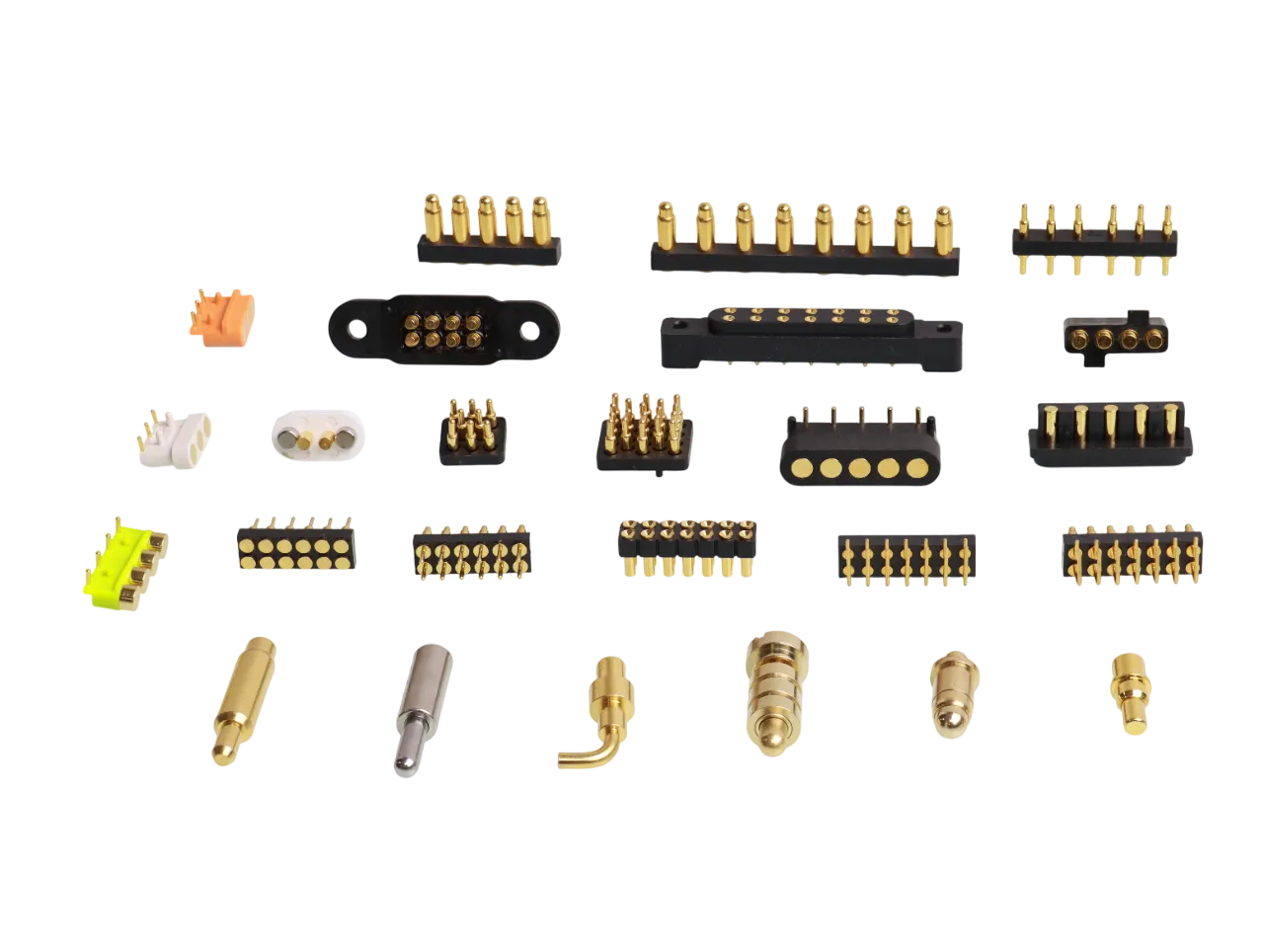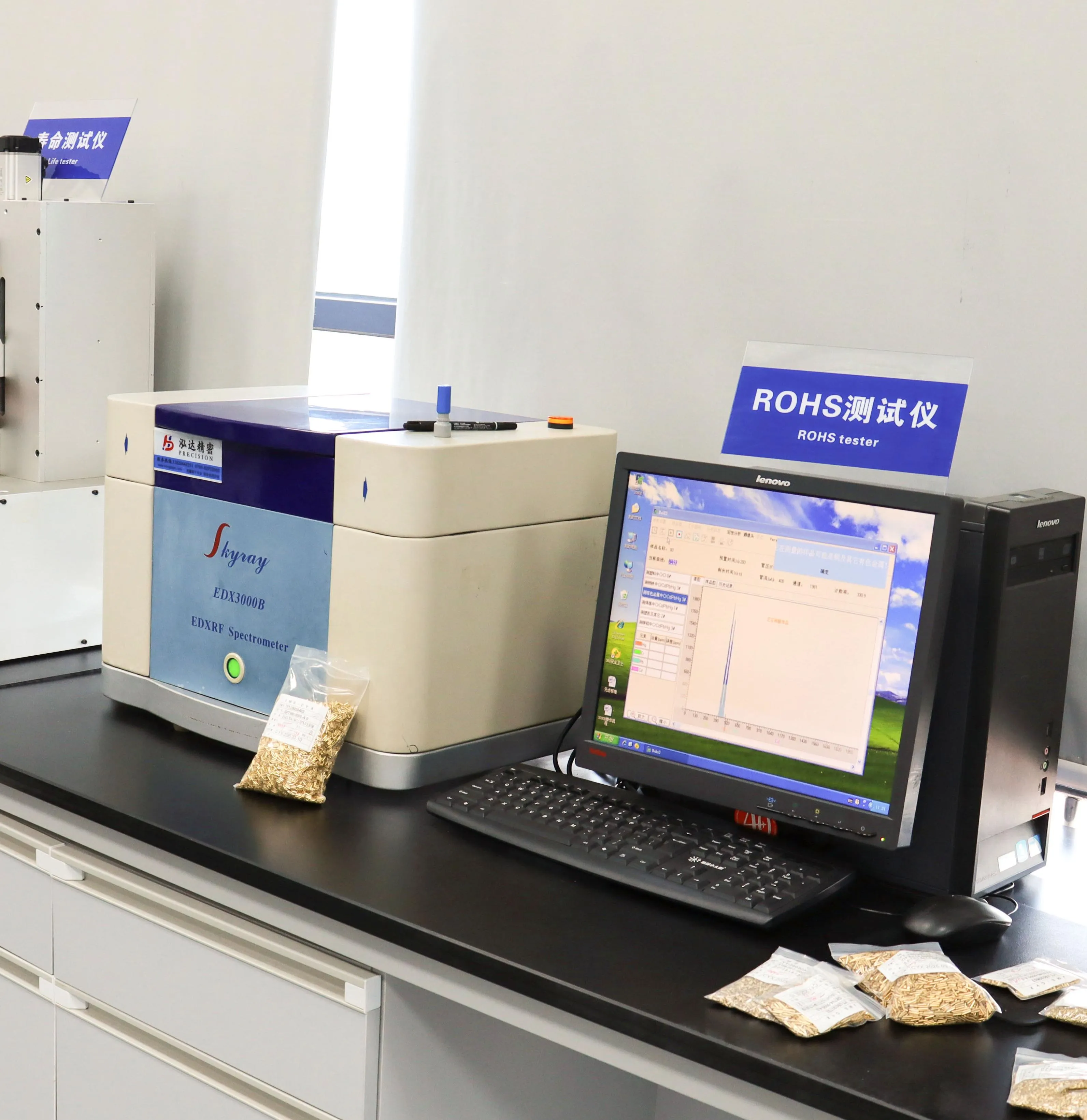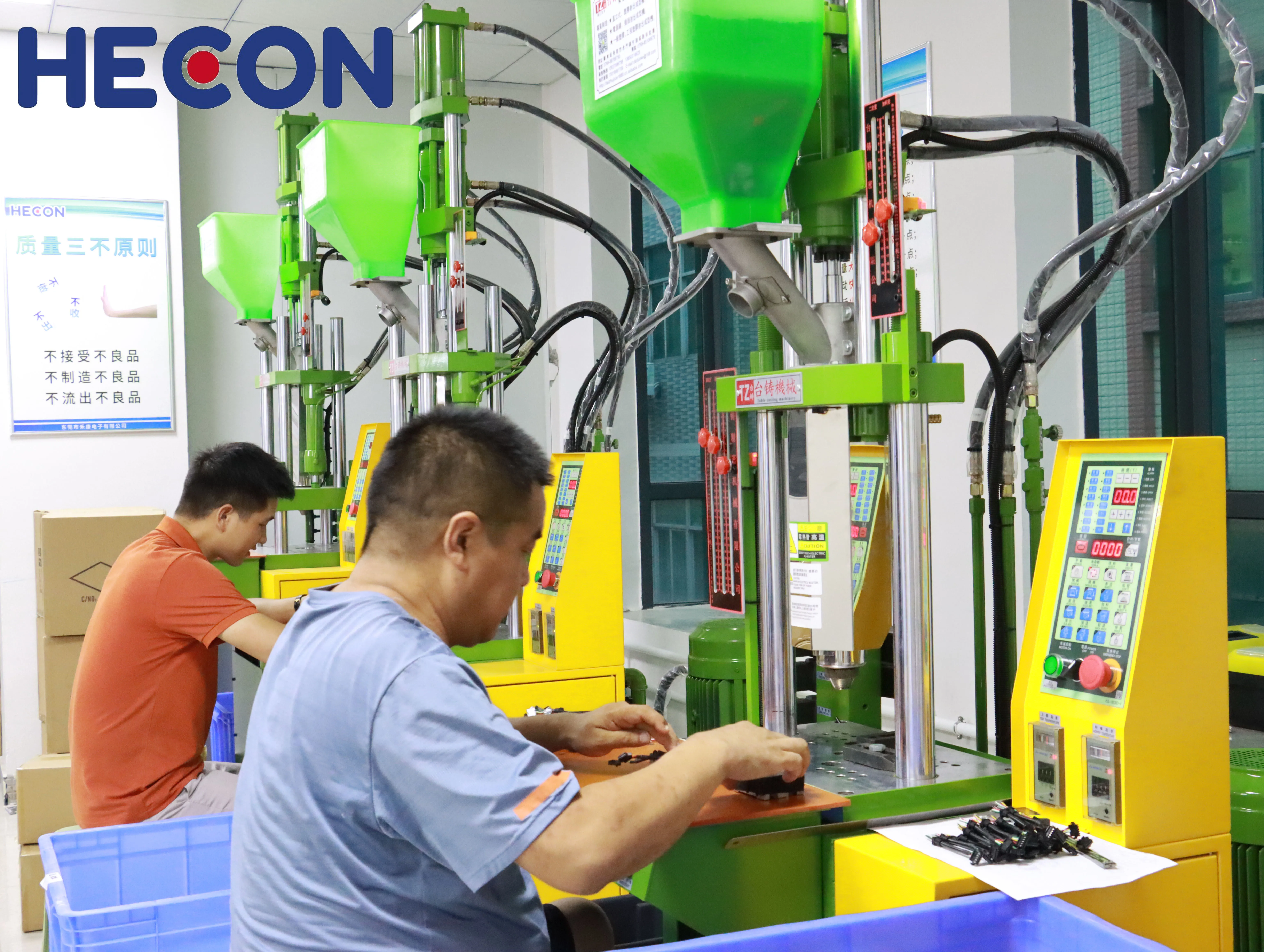What steps in quality control lead to dependable pogo pin connectors
Release time:
2025-08-09
Environmental testing checks if Pogo Pin Connectors work well in tough places. Makers use many tests to see how these connectors handle heat, wetness, shaking, shock, and staying clean. These tests help make sure the connectors work in cars, hospitals, and factories.
What steps in quality control lead to dependable pogo pin connectors
Reliable Pogo Pin Connectors are made by following strict quality steps. Makers start by picking the right materials and working with suppliers. They design for easy testing and set clear test rules. They also look at data all the time to control how things are made. Tough tests check how the connectors handle things like wetness, shaking, and rust. These tests make sure the connectors last a long time. Certifications like ISO 9001 and ISO 14001 prove these steps are good. Final checks make sure there are no mistakes before shipping. Every step helps the connectors work well in hard jobs.
Key Takeaways
1.Using strong materials like beryllium copper and gold plating helps pogo pin connectors last longer. These materials also help them work better.
2.areful design and exact manufacturing keep connectors steady. They stay clean and can handle heat and shaking.
3.Regular tests for temperature, vibration, and cleanliness make sure connectors work well. They are used in cars, hospitals, and factories.
4.Following rules like ISO 9001 builds trust. It also makes sure connectors are high-quality and safe.
5.Final checks and zero-defect goals make sure every connector works right before customers get them.
Material & Supplier Control

Material Choices
Manufacturers pick materials for pogo pin connectors very carefully. They want the connectors to last a long time and work well. Copper alloys are used a lot, especially beryllium copper. Beryllium copper lets electricity flow easily. It is strong and bends without breaking. These features help the connector keep working after many uses. Gold plating goes on top to help electricity move and stop rust. This gold layer also lets the connector handle lots of power safely. Sometimes, phosphor bronze or brass are used instead if costs or rules change. Springs inside use stainless steel or beryllium copper wire. These wires are strong and bend well, so the connector works under pressure.
Tip: The material you choose changes how the connector works. It affects how electricity moves and how long the connector lasts.
Common materials used in pogo pin connectors include:
1.Beryllium copper for plungers, which lasts long and lets electricity flow.
2.Brass for barrels, which saves money and works well.
3.Phosphor bronze for stopping rust and working with fast signals.
4.Stainless steel or beryllium copper wire for springs, which bend and last long.
5.Gold plating for better electricity flow and stopping rust, sometimes with nickel under it for extra strength.
Supplier Verification
Manufacturers trust good suppliers to get quality parts. They check suppliers often to make sure there are no problems. They use outside inspectors to find hidden mistakes. These checks stop problems before they happen. Good suppliers have strong quality rules, so parts work well. This means fewer checks are needed. Audits also find fake or bad materials that can cause trouble and cost more money. Working with suppliers who care about quality helps everything run smoothly and stops problems.
Key steps in supplier verification:
1.Check suppliers often to make sure they follow rules.
2.Use outside inspectors to find hidden problems.
3.Pick suppliers who test their parts and care about quality.
4.Work with suppliers who help after sales and follow rules.
Quality control begins with picking good materials and suppliers. These steps help make pogo pin connectors that work well every time.
Manufacturing Control
Design Engineering
Engineers plan pogo pin connectors to be reliable. They want the connectors to work well in hard places. They use some important steps:
1.They keep contact pressure between 30 and 90 grams-force (gf). This helps the connection stay steady when things shake or get hot.
2.The contacts clean themselves. When they slide, they wipe away dust and oxide. This keeps contact resistance changes under 2%.
3.They pick springs made from high elasticity alloys. They also use gold plating at least 3μin thick. This stops resistance from growing and keeps the connector from failing.
4.They use more than one layer of plating, like gold and palladium nickel. This helps stop rust and keeps the connector strong for over 1,000 hours.
5.They make the connectors last a long time. Many pogo pin connectors can be used 200,000 to 300,000 times. This is much longer than old connectors.
6.They make sure the size and flatness are correct. This stops problems from bumps or dirt that can raise impedance.
7.They make the contact area and pressure just right. This lowers impedance and keeps the connector safe.
8.They use strong designs with spring-loaded parts. This helps the connector handle shaking and bumps.
These choices help pogo pin connectors work well in medical, aerospace, and industrial jobs.
Process Quality
Makers use special tools to check every step. Coordinate measuring machines (CMM) and charge-coupled devices (CCD) watch how far springs move. They can measure as close as 0.01mm. This careful checking cuts down on waste by 83%. Machines check spring movement and contact resistance by themselves. This helps get a yield rate of 99.98%. Finding problems early, teaching workers, and doing both full and random checks keep defects low. Robots, vision checks, and special tools make things faster and more exact. Keeping molds in good shape and using careful machining also help make more good connectors and fewer bad ones.
Note: Good process quality makes sure each pogo pin connector is checked before moving on.
Anti-Contamination
Keeping pogo pin connectors clean is very important. Makers use different ways to protect them:
1.Glue seals small and light things like smartwatches. This makes them waterproof.
2.Molding with thin plastic makes connectors stronger and easier to put together. This is used a lot in wearables.
3.O-rings make tight seals for bigger things like phones and watches.
4.Glass sintering gives airtight protection for military or high-pressure uses. It costs more but works very well.
Other good habits are checking often, handling parts carefully, and keeping the work area clean. Gold plating over nickel stops rust. Cleaning with lint-free swabs and isopropanol keeps contacts free of dust. Workers wear anti-static gloves to stop static from hurting the connectors. These steps, plus following rules like ISO 9001 and RoHS, help pogo pin connectors stay clean and work well everywhere.
Pogo Pin Connectors: Environmental Testing
Environmental testing checks if Pogo Pin Connectors work well in tough places. Makers use many tests to see how these connectors handle heat, wetness, shaking, shock, and staying clean. These tests help make sure the connectors work in cars, hospitals, and factories.
Temperature & Humidity
Makers put Pogo Pin Connectors in very hot and cold places. They also test them in wet air to see if they last. These tests copy real places like car engines or hospital tools that get wet. The table below lists some common tests and why they are done:
Pogo Pin Connectors can work from -40°C to +100°C. Some are made for even colder or hotter places, like -100°C to +150°C. Humidity chambers check for rust and water damage. Gold or palladium-nickel plating keeps the connectors working in wet places. IP-rated covers keep out dust and water.
Vibration & Shock
Vibration and shock tests copy the bumps and shakes in cars, machines, and hospital tools. These tests use rules like ISO 16750 and IEC 60068. Some important things are:
1.Vibration tables shake the connectors at 70-300Hz and up to 6g for 48 hours.
2.Drop tests drop the connectors 50 times from 1.5 meters and hit them on three sides at 6g/150Hz.
3.Engineers use computer models to see where stress happens and stop weak spots.
4.Many contact points and springy designs keep signals steady when moving.
5.LiDAR scanners and drone boards need these tests to work well.
Medical connectors use twist-and-lock parts and magnets to keep contact during shaking. Industrial connectors use strong cases and careful limits to stay safe.
Cleanliness
Cleanliness tests see if Pogo Pin Connectors can keep out dust, water, and dirt. Medical connectors need to be waterproof, often with IP67 ratings, and must handle cleaning. Rubber seals and E-Seal tech block water and dust. Factory connectors get dust and water tests to make sure they work outside and inside. Both types must follow strict rules for being clean and lasting a long time.
Tip: Clean connectors last longer and work better, especially in hospitals and factories.
Certifications & Standards
ISO Compliance
International certifications are very important for making sure pogo pin connectors are good. Top companies have many certifications like ISO 9001, ISO 14001, ISO 45001, and IECQ QC080000. These certifications mean the company follows strict world rules. ISO 9001 is a big rule for quality. It checks everything from materials to final checks. Companies with ISO 9001 show they manage things well and care about customers. They also work to get better and make strong products. ISO 14001 is about caring for the environment. It helps companies make less waste and protect nature.
Note: Certifications like ISO 9001 and ISO 14001 help companies earn trust. They show the company cares about quality, safety, and the planet.
ISO 9001 helps companies sell in many countries. It means they do not need lots of local rules. This makes selling products around the world easier. The rule helps companies control how things are made, manage suppliers, and keep workers happy.
Quality Systems
A strong quality management system helps every pogo pin connector meet high standards. Companies watch important steps like injection molding all the time. They check temperature, pressure, and speed to keep connectors safe. Materials get checked to make sure they are good and safe. Mold checks make sure each part fits right.
Finished connectors go through many tests. These tests include looking at them, measuring size, and checking how they work in real life. Companies keep records for every connector. This helps them find and fix problems fast.
- Batch testing and outside checks make sure products are good.
- Tracking materials helps companies buy safe parts.
- Special tools help workers check connectors exactly.
A full quality system with certifications gives customers trust. It shows the company can always make safe and strong pogo pin connectors.
Final Inspection

Product Testing
Makers use special tests to check every pogo pin connector. They do this before the connectors leave the factory. Machines test how well electricity moves through each connector. This makes sure resistance is low and the connector works well. Coordinate measuring machines check the size of the pins. These machines make sure the pins are the right shape. Other tools test how strong the springs are. This helps each pin push with the right force. Cameras and computers look for problems in the plating or how the parts fit together. Some tests press the pins many times to see if they last a long time.
Self-alignment design helps the pins fit even if they are a little off. This keeps the connection steady and correct. Cycle consistency testing checks if the connector still works after many uses. Stable mating means people make fewer mistakes and the tests are more accurate.
Some problems found in these tests are pins not lined up, wrong pressure, dirt, rust, or damage. Looking at the connectors helps find these problems before they are sent out.
Zero-Defect Delivery
Makers want every pogo pin connector to be perfect. They use strong quality checks at every step. They use many tests and tools to check the connectors. They check the materials, watch the making process, and test the finished connectors. Every pogo pin connector gets tested for spring force and how well it lets electricity flow. Workers also look at each connector to find any problems.
Automatic machines and computers help keep the quality high. Companies try to have more than 99% of connectors pass the first test. Workers get training to learn the best ways to check connectors. Following ISO 9001 rules helps keep the quality the same every time. Makers track each connector as it is made. This helps them find and fix problems fast. These steps help make pogo pin connectors that work well and keep customers happy. The best factories have less than 1% of connectors sent back.
Tip: Zero-defect delivery helps customers trust the product and makes sure it works well in real life.
Quality control helps Pogo Pin Connectors work well in tough jobs. Makers pick strong materials and use special designs to make them last longer. They use careful tests and checks to stop problems and make the connectors more reliable. They always try to get better by listening to customers and making changes.
- Good materials and special designs help connectors last.
- Careful testing and checking stop mistakes and make them work better.
- Makers keep improving by using ideas from customers.
Good quality control makes sure connectors work well in cars, hospitals, and factories.
FAQ
What makes pogo pin connectors reliable in harsh environments?
Makers use tough materials and gold plating. They test for heat, wetness, and shaking. These steps help pogo pin connectors work in cars, factories, and hospitals.
How do companies check for defects in pogo pin connectors?
Machines test spring force, contact resistance, and size. Workers look at each connector for dirt, rust, or damage before shipping.
Why is gold plating important for pogo pin connectors?
Gold plating stops rust and keeps signals strong. It helps connectors last longer, even after lots of use.
What certifications should quality pogo pin connectors have?
Good connectors meet ISO 9001 for quality and ISO 14001 for caring for nature. These show the company follows strict world rules.
Can pogo pin connectors be used in medical devices?
Yes. Medical pogo pin connectors pass special tests for being clean, waterproof, and strong. They meet strict rules to keep patients safe.






